The once-busy station
On a hill overlooking Greylingstad in Mpumalanga is a series of whitewashed stones arranged in the letters “SR”. Earlier this year, a group of old-time Greylingstad residents, including Johan Bronkhorst and Hennie van Schalkwyk, spent most of a Saturday on the hill, painting and rearranging them.
When asked why they repainted a memorial to the Scottish Rifles in the South African War, even going so far as to pay for the paint, Bronkhorst said: “We did it because people did it before us.”
One can’t readily imagine why Greylingstad (about an hour and a half southeast of Johannesburg, between Balfour and Standerton on the R23) would inspire such affection. It has become a shadow of its former self in recent years, and although it isn’t quite a ghost town, it’s certainly a dorp on an extended sabbatical from the modern world.
It’s the kind of place where, with a little imagination, phantoms of boom times past might conceivably saunter down the street. If you wander up to the (now burnt-down) building on the Greylingstad station platform, you might even fancy you can hear the thunder of diesel locomotives and passenger carriages.
Shoot the breeze with the grizzled old-timers and they might just remember when the R23 doubled as the main drag and the Easter weekend traffic to and from Durban was so heavy that Mr Mendez, the owner of the Portuguese fish ’n chip shop, stayed open until midnight.
“It was a circus,” says Van Schalkwyk wistfully.
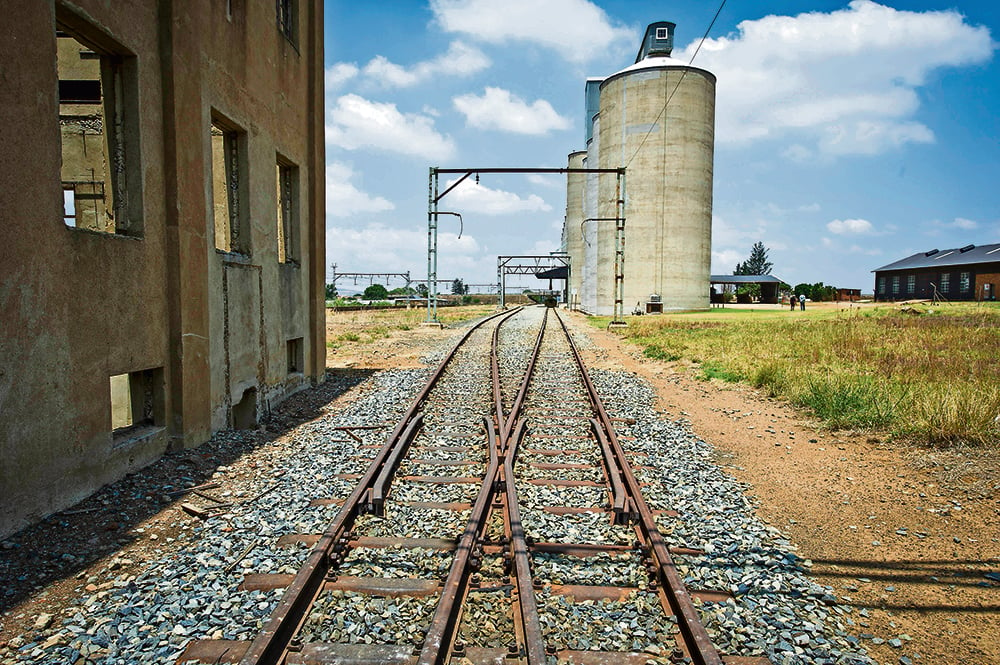
The old three-storey grain mill on the left of the railway tracks is now a stripped-out shell. (Photos: Delwyn Verasamy, M&G)
Suliman Sulaman is one of Greylingstad’s oldest residents, and still lives in the house where he was born. He also possesses a fine memory and can tell you without skipping a beat where such-and-such had their shop and from whom the shop was bought.
He’ll talk you through the location of Mr Pruis’s Kontant Slaghuis (Cash Butchery) and tell you where the Pegasus Garage and Cissie’s Doll House, the local roadhouse, were located. He can even tell you about the telephone exchange, housed in a little building next to the (now demolished) post office.
Sulaman refers to the exchange and its party line as “nommer asseblief [number please]” and can still recall the names and demeanours of those who worked there. “My ouma [granny] used to phone her three daughters [in Johannesburg, Rostof – between Perdekop and Standerton – and Burgersfort] after nine in the evenings because she knew that Mr Espagh was on the exchange – he always knew the correct numbers.”
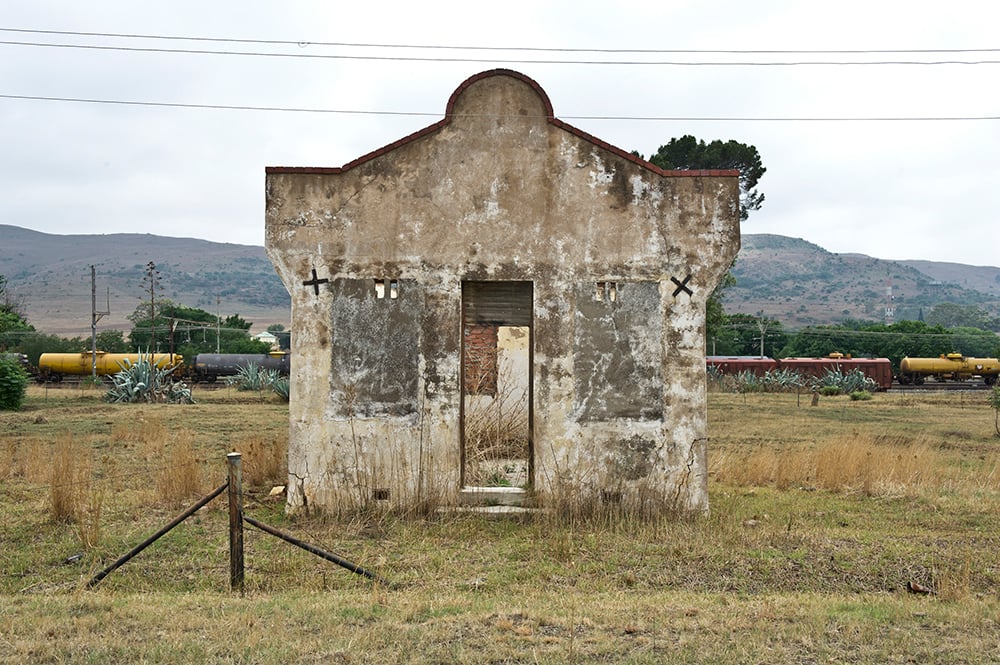
The former co-op store in Greylingstad.
Sulaman, known as “Solly” to his friends, also intimates that as a Muslim he tended to steer clear of the goings-on in the bar of the Greylingstad Hotel and the rooms beyond, preferring to keep his own counsel among the shop-owning class and farm traders. His good friend Van Schalkwyk knew Wally Freitagh’s three-star establishment slightly better, because he spent a year there working as a barman.
“They used to call it the ‘Honeymoon Hotel’ because if you got married somewhere on the East Rand you used to spend your first night there before going down to the coast,” says Van Schalkwyk, the town’s unofficial historian and a retired school principal.
“I remember fights between the ‘Natte’ and the ‘Sappe’ [National Party supporters versus followers of Jan Smuts’ United Party, sometimes known as Bloedsappe] and sometimes there would be music, with a concertina and a guy on the bekfluitjie [mouth organ].
“Test matches against the All Blacks at Ellis Park were also big days for the bar. All the farmers used to come back here afterwards. Some even spent the night.”
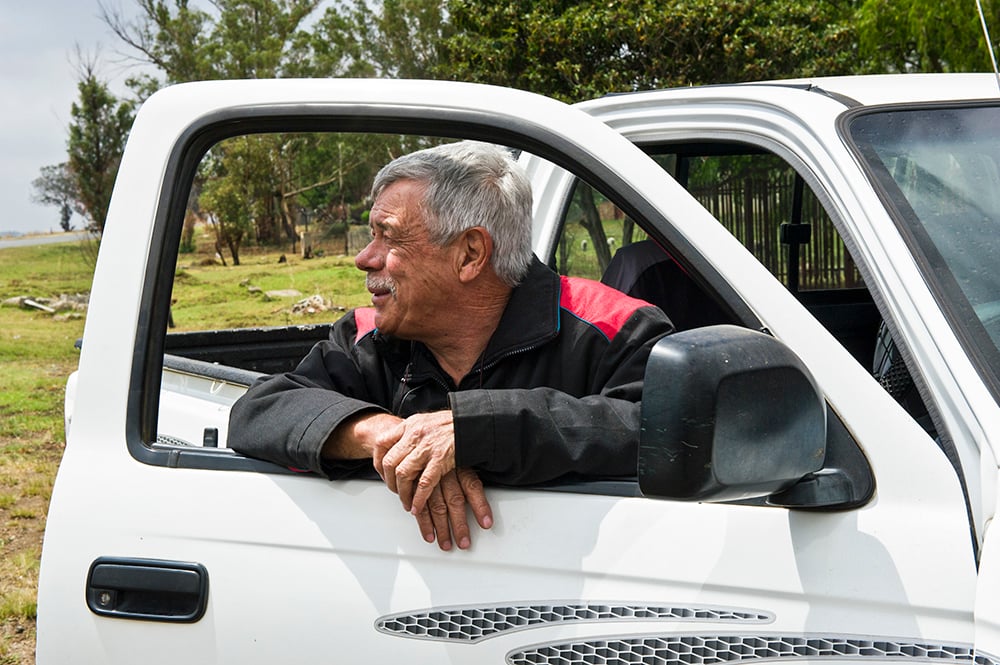
Long-time Greylingstad resident Hennie van Schalkwyk laments the demise of the town.
Located in rich agricultural country, with links to the Bezuidenhouts of Bezuidenhout Valley in Johannesburg fame, Greylingstad was of great strategic importance during the South African War because it was located on the main railway line between the Reef and the then colony of Natal. A regiment of Scottish Rifles took several artillery pieces on to the hill overlooking the town and built themselves a warren of walled fortifications from the remains of a Stone Age settlement that had stood there, undisturbed, for thousands of years.
The action between the British and the Boers was brief and inconclusive. The Boers would hurry down off the hills opposite the British fortifications on their ponies and harass and make mischief, often to ambiguous ends, and the British dragooned the local black population into a nearby concentration camp, making them repair the damage to the railway line caused by the Boers. The graves of the black concentration camp dead number several hundred. They are tucked behind a clump of bushes not far from the town itself and have only recently become the subject of curiosity.
In later years, the area became a breadbasket, with farmers also growing soya and cabbages, and tending sheep, goats and cattle. Sheep farming has become hazardous (a rustled sheep is called a “take-away” in these parts) and the three-storey-high grain mill next to a spur of the main railway line has had its roof and its Oregon-pine floorboards and window frames removed.
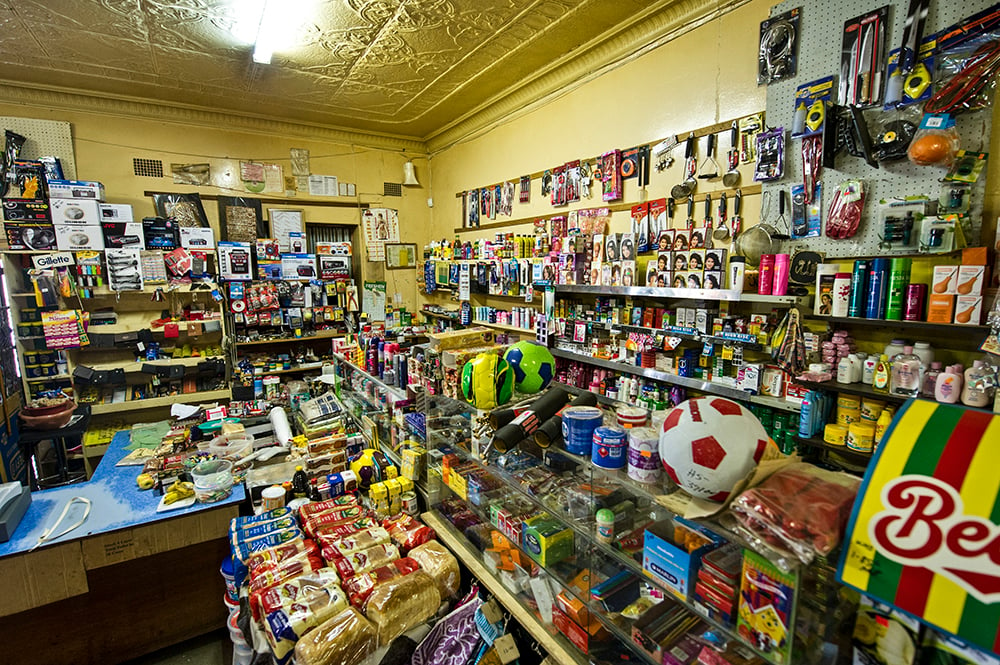
A local general dealer still carries a wide stock of goods to satisfy a variety of tastes for the remaining residents of the dorp.
Look at the building today and you can see it once had the functional charm of a well-made working building. Today it is a shell, its basement full of weeds, empty bottles and pigeon droppings.
Depending on the strength of your view, the destruction of the mill is either representative of a general callousness or, worse still, indicative of a hatred of the past. Van Schalkwyk, the town historian, who had his vast collection of books, artefacts and town memorabilia destroyed in a winter veld fire last year, believes that Greylingstad could easily have become a Pilgrim’s Rest-type model town, but the tin houses were ripped down, the post office was destroyed in a fire and the agricultural co-operative, finding trade slowing to a trickle, finally bolted its doors.
Van Schalkwyk is particularly bothered by the co-op’s closure because he thinks that the buildings around the railway tracks could house trade schools and be used to improve the lives of the often
unemployed township residents. “[But] there just doesn’t seem to be much will on the part of the ANC,” he says.
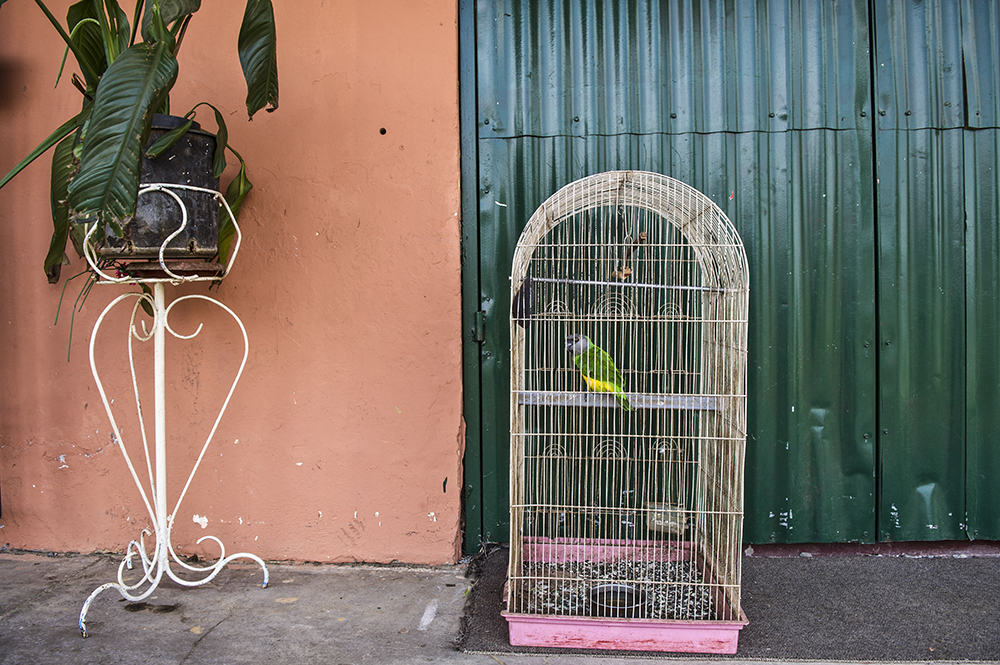
A caged parakeet adds a spot of colour to a take-away joint in the once-thriving agricultural town.
Of course Greylingstad didn’t become a passable example of platteland Gothic overnight. Rather it was a tale of incremental decline, with decisions made in airy boardrooms and municipal offices condemning residents like Sulaman and Van Schalkwyk to live forever with one foot in the past, mulling over deeds long gone, characters fading into the dimness of the almost forgotten. It used to be the case, says Van Schalkwyk, that a 300-hectare farm was just about sustainable, but in the 1980s the smaller farms were bought up by wealthy farmers or agribusinesses. With the concentration of land and mechanisation of labour came the expulsion and cruel neglect of rural communities – all contributing to the town’s decline.
“Before Christmas you used to have trailers and bakkieloads full of farmworkers coming off the farms to do business and buy presents and supplies,” says Van Schalkwyk. “That just doesn’t happen anymore.”
Then the main road was diverted so that it no longer ran through the town, rail traffic declined and nearby gold mines closed down. There’s a history, too, of buildings being burnt down in the town’s history, sometimes because veld fires have been fanned by powerful winds, but sometimes because of arson and a desire to cover fraud and embezzlement.
But it doesn’t matter much anymore, for the currency of Greylingstad is more likely to be the bittersweet coin of memory than that of rands and cents.
Van Schalkwyk remembers a drive-in cinema, blazing like a dream palace out in the fields. It was a drive-in with a difference because patrons had to tune in their car radios to capture the film’s sound. Only then could they hear Elizabeth Taylor whisper sweet nothings to Richard Burton, as the wind gently rocked the mealie fields all around.